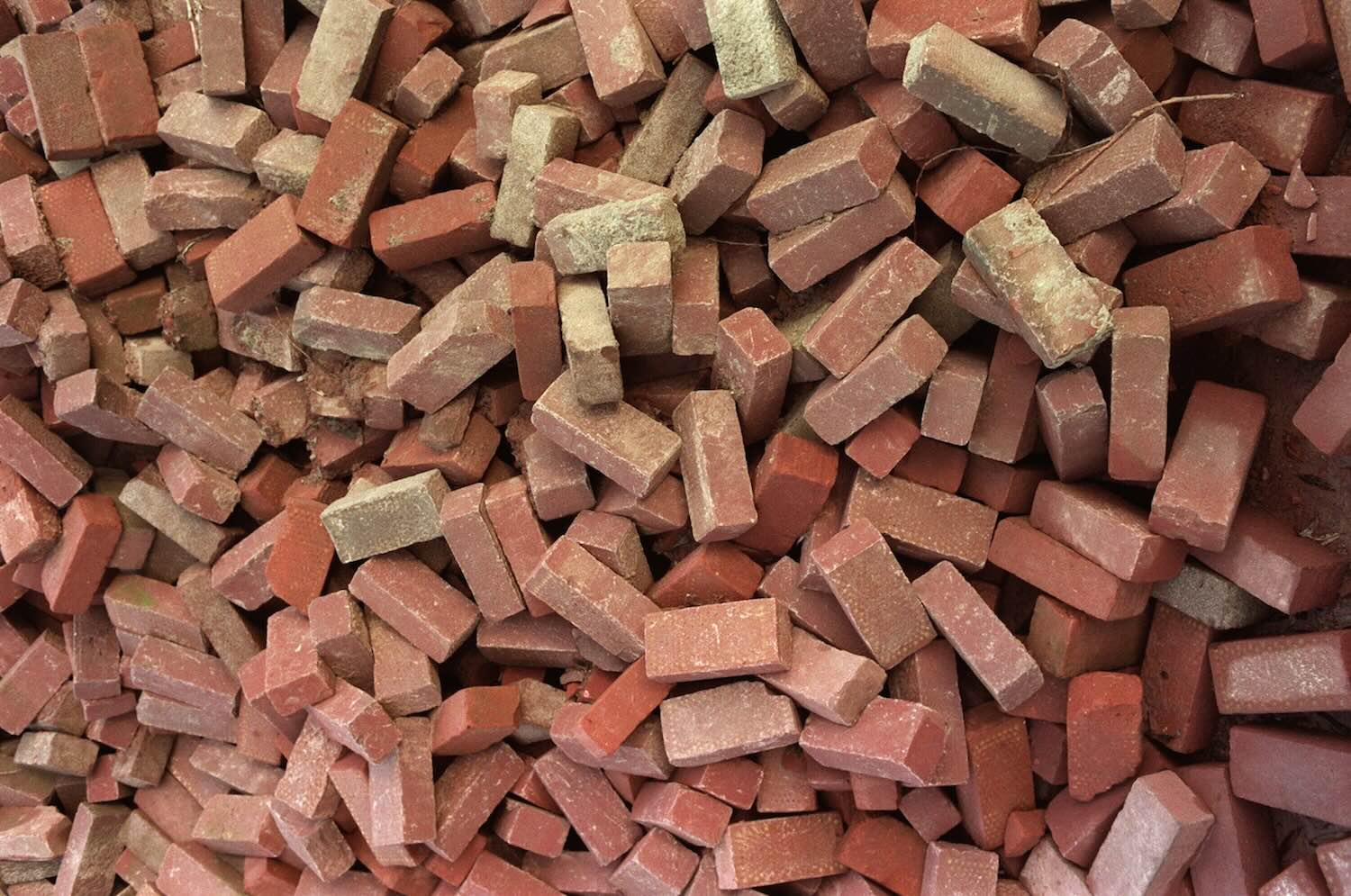Home>Construction & Tools>Building Materials>How Many Ounces Is A Brick


Building Materials
How Many Ounces Is A Brick
Published: January 21, 2024
Discover the standard weight of a brick and its measurement in ounces. Learn more about building materials and their weights.
(Many of the links in this article redirect to a specific reviewed product. Your purchase of these products through affiliate links helps to generate commission for Storables.com, at no extra cost. Learn more)
Introduction
Bricks have been an integral part of construction for centuries, serving as the fundamental building blocks for structures worldwide. Their durability, versatility, and aesthetic appeal make them a popular choice for various construction projects. When it comes to the weight of a brick, it's a topic that often arises during construction planning, as understanding the weight of building materials is crucial for structural integrity and logistics. In this article, we'll delve into the intricacies of brick weight, exploring the standard weight of a brick, variations in weight, and the factors that influence it. Whether you're a construction professional, a DIY enthusiast, or simply curious about the weight of this foundational material, this article aims to provide comprehensive insights into the weight of a brick. Let's embark on a journey to uncover the mysteries of this essential building component.
Key Takeaways:
- Bricks typically weigh around 5 pounds and come in various types for different construction needs, showcasing their versatility and reliability as building materials.
- Factors like material composition, dimensions, and manufacturing techniques influence brick weight, highlighting the intricate dynamics that shape their properties and usage in construction projects.
Read more: How Many Ounces Are In A Glass
Understanding the Weight of a Brick
Before delving into the specifics of a brick’s weight, it’s essential to grasp the significance of this fundamental building material. Bricks are crafted from various materials, including clay, shale, concrete, and sand lime, each contributing to the structural and aesthetic properties of the final product. The weight of a brick plays a pivotal role in determining its load-bearing capacity, transportation requirements, and overall construction feasibility.
When considering the weight of a brick, it’s important to note that variations exist based on the type of brick and its intended application. Standard bricks used in construction typically weigh around 5 pounds, providing a sturdy foundation for walls, pavements, and other structural elements. However, specialized bricks, such as those designed for insulation or acoustic purposes, may have different weight specifications to fulfill their unique functions.
Furthermore, the dimensions of a brick also influence its weight. While traditional bricks often adhere to standard dimensions, variations in size can impact the overall weight of individual units. For instance, oversized or undersized bricks will naturally exhibit deviations in weight compared to standard dimensions.
Understanding the weight of a brick extends beyond mere numerical values. It encompasses the interplay between material composition, structural integrity, and practical considerations in construction projects. As we unravel the intricacies of brick weight, we gain a deeper appreciation for the role of this time-honored building material in shaping the built environment.
The Standard Weight of a Brick
When discussing the standard weight of a brick, it’s crucial to consider the prevailing norms in the construction industry. The weight of a standard brick is approximately 5 pounds, though slight variations may exist based on regional standards and manufacturing processes. This weight is a result of the materials used in the brick’s composition, typically clay or shale, and the firing process during production.
Standard bricks are renowned for their reliability and consistent weight, making them a cornerstone of construction projects worldwide. Whether used in residential, commercial, or industrial settings, these bricks offer a robust foundation for various structural components, including walls, facades, and pavements. Their uniform weight facilitates efficient handling during transportation and installation, contributing to the streamlined progression of construction endeavors.
It’s important to note that while the standard weight of a brick is well-defined, deviations can occur due to factors such as moisture content, irregularities in the manufacturing process, or the incorporation of additives for specific functionalities. However, reputable brick manufacturers adhere to stringent quality control measures to ensure that deviations from the standard weight are minimal, thereby upholding the reliability and structural integrity of their products.
Understanding the standard weight of a brick is indispensable for architects, engineers, and construction professionals, as it forms the basis for load calculations, material estimations, and structural design considerations. By adhering to established weight standards, construction projects can proceed with confidence, knowing that the foundational elements meet industry benchmarks for quality and performance.
In essence, the standard weight of a brick symbolizes the steadfastness and dependability that this time-honored building material brings to the construction landscape, underscoring its enduring relevance in shaping the built environment.
A standard brick weighs around 4.5 pounds, which is equivalent to 72 ounces. So, a standard brick is approximately 72 ounces.
Variations in Brick Weight
While the standard weight of a brick provides a foundational benchmark, it’s essential to recognize that variations in brick weight exist due to a multitude of factors. These variations stem from the diverse types of bricks available, each tailored to specific construction requirements and functional attributes.
One notable source of variation in brick weight arises from the materials used in their composition. For instance, clay bricks, renowned for their durability and aesthetic appeal, exhibit a standard weight of approximately 5 pounds. In contrast, concrete bricks, which offer enhanced strength and resilience, may weigh slightly more due to the density of the material. Additionally, bricks designed for specialized applications, such as thermal insulation or soundproofing, may deviate significantly from the standard weight to accommodate the incorporation of insulating materials or acoustic enhancements.
Furthermore, variations in brick weight can be attributed to differences in dimensions and configurations. Oversized bricks, often employed for decorative purposes or to achieve specific architectural effects, naturally weigh more than their standard-sized counterparts. Conversely, lightweight bricks, engineered to reduce overall structural load and improve energy efficiency, exhibit a lower weight compared to traditional bricks.
Regional influences and manufacturing techniques also contribute to variations in brick weight. For instance, bricks produced in regions with distinct clay compositions may exhibit differences in weight due to the inherent properties of the raw materials. Moreover, manufacturing processes, such as kiln firing temperatures and molding methods, can impact the density and, consequently, the weight of the final brick products.
Understanding the variations in brick weight is paramount for construction professionals and project stakeholders, as it informs material selection, load-bearing calculations, and logistical planning. By acknowledging the diverse array of brick types and their associated weights, construction endeavors can harness the versatility and adaptability of bricks to meet specific project requirements.
In essence, the variations in brick weight reflect the dynamic nature of this foundational building material, offering a spectrum of options to address the multifaceted demands of contemporary construction practices.
Factors Affecting Brick Weight
The weight of a brick is influenced by a myriad of factors that encompass its composition, manufacturing processes, and environmental conditions. Understanding these factors is instrumental in comprehending the nuanced variations in brick weight and their implications for construction applications.
Material Composition: The primary material used in brick production, whether clay, shale, concrete, or sand lime, significantly impacts the weight of the final product. Each material possesses distinct density and structural properties, leading to variations in brick weight based on the composition employed.
Moisture Content: The moisture content of bricks, particularly during the manufacturing and curing phases, can influence their weight. Bricks with higher moisture levels may exhibit increased weight, necessitating appropriate drying procedures to achieve standard weight specifications.
Additives and Reinforcements: Bricks tailored for specific functionalities, such as thermal insulation, acoustic performance, or enhanced durability, often incorporate additives or reinforcements that contribute to variations in weight. These modifications cater to specialized construction requirements but may result in deviations from the standard brick weight.
Manufacturing Techniques: The methods employed during brick production, including molding, drying, and firing processes, play a pivotal role in determining the final weight of the bricks. Variations in manufacturing techniques, such as extrusion molding versus soft-mud molding, can yield differences in brick density and weight.
Geographical Factors: The geological composition of clay and shale deposits in different regions can lead to variations in brick weight. Unique mineral content and soil characteristics influence the density and structural integrity of the raw materials, thereby impacting the weight of the resulting bricks.
Dimensional Specifications: The dimensions of bricks, including variations in length, width, and height, directly affect their weight. Larger or irregularly shaped bricks naturally exhibit deviations in weight compared to standard-sized units, necessitating tailored considerations in construction planning.
Environmental Conditions: External factors such as ambient humidity, temperature fluctuations, and exposure to weather elements can influence the weight of bricks. Proper storage and handling practices are essential to mitigate the impact of environmental conditions on brick weight.
By comprehensively evaluating these factors, construction professionals can make informed decisions regarding material selection, structural design, and logistical considerations, ensuring that the weight of bricks aligns with project specifications and industry standards.
Read more: How Many Ounces Is A Glass Of Water
Conclusion
Exploring the weight of a brick unveils a tapestry of considerations that underscore the significance of this foundational building material. From the standard weight of traditional bricks to the diverse variations arising from material composition, dimensions, and manufacturing techniques, the weight of bricks encapsulates a blend of structural, functional, and practical nuances.
Understanding the weight of bricks is not merely a matter of numerical values; it embodies the essence of construction craftsmanship, where the interplay between material characteristics and project requirements shapes the built environment. The standard weight of a brick, approximately 5 pounds, serves as a steadfast benchmark, reflecting the reliability and consistency that underpin construction practices globally.
Embracing the variations in brick weight unveils a spectrum of possibilities, catering to the diverse demands of modern construction. Whether it’s the density of concrete bricks, the thermal efficiency of insulating bricks, or the aesthetic allure of oversized units, the weight of bricks mirrors the adaptability and ingenuity embedded in construction solutions.
Factors influencing brick weight, encompassing material composition, moisture content, manufacturing techniques, and environmental influences, illuminate the intricate dynamics that govern the properties of this fundamental building material. By navigating these factors, construction professionals can orchestrate the seamless integration of bricks into projects, ensuring that weight considerations align with structural integrity and performance expectations.
In essence, the weight of a brick transcends its numerical value, embodying the legacy of centuries-old construction practices and the innovation driving contemporary architectural achievements. As we continue to build and shape the world around us, the weight of bricks stands as a testament to the enduring legacy of this timeless building material.
Ultimately, the weight of a brick encapsulates a narrative of resilience, adaptability, and craftsmanship, weaving its presence into the fabric of construction history and the aspirations of future architectural endeavors.
Frequently Asked Questions about How Many Ounces Is A Brick
Was this page helpful?
At Storables.com, we guarantee accurate and reliable information. Our content, validated by Expert Board Contributors, is crafted following stringent Editorial Policies. We're committed to providing you with well-researched, expert-backed insights for all your informational needs.















0 thoughts on “How Many Ounces Is A Brick”